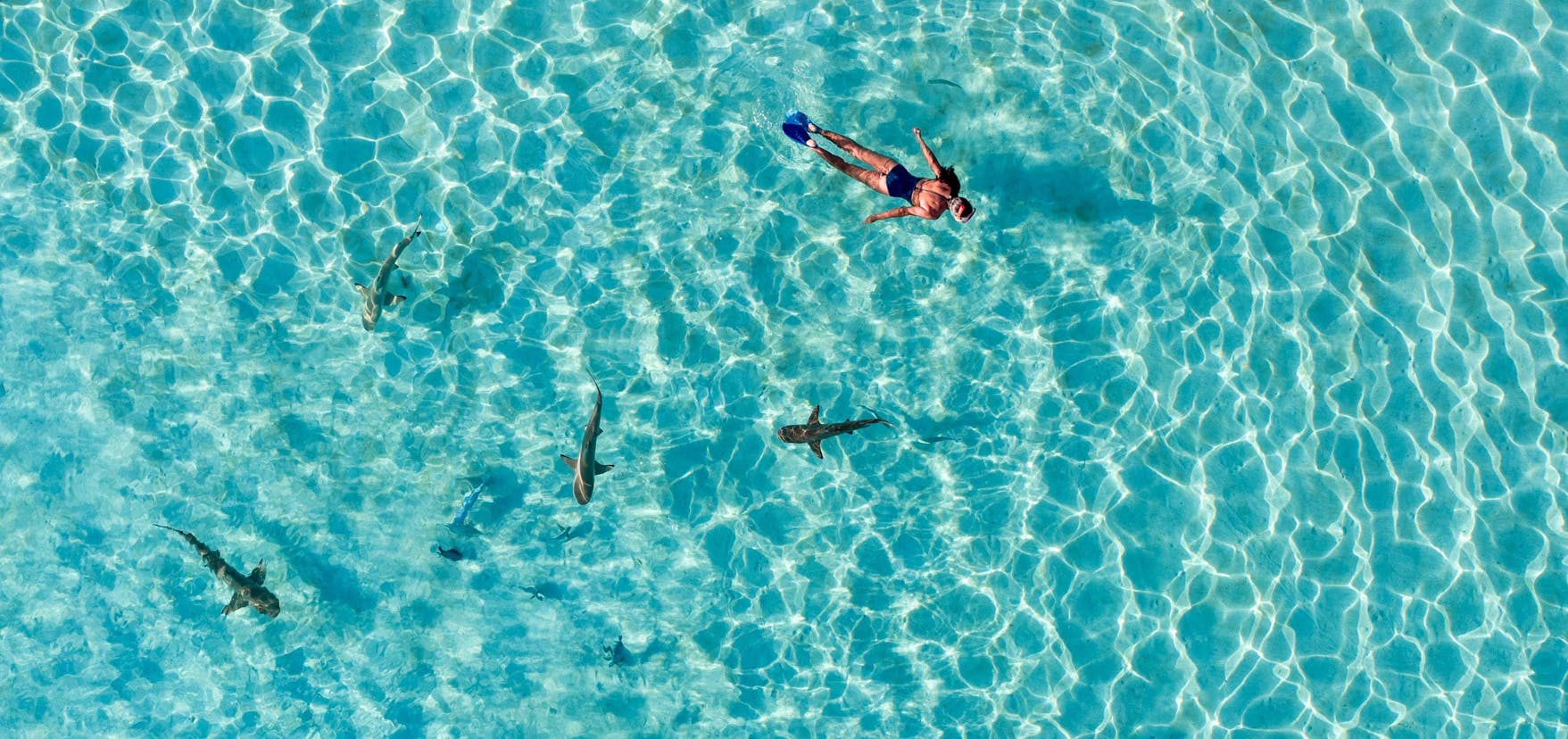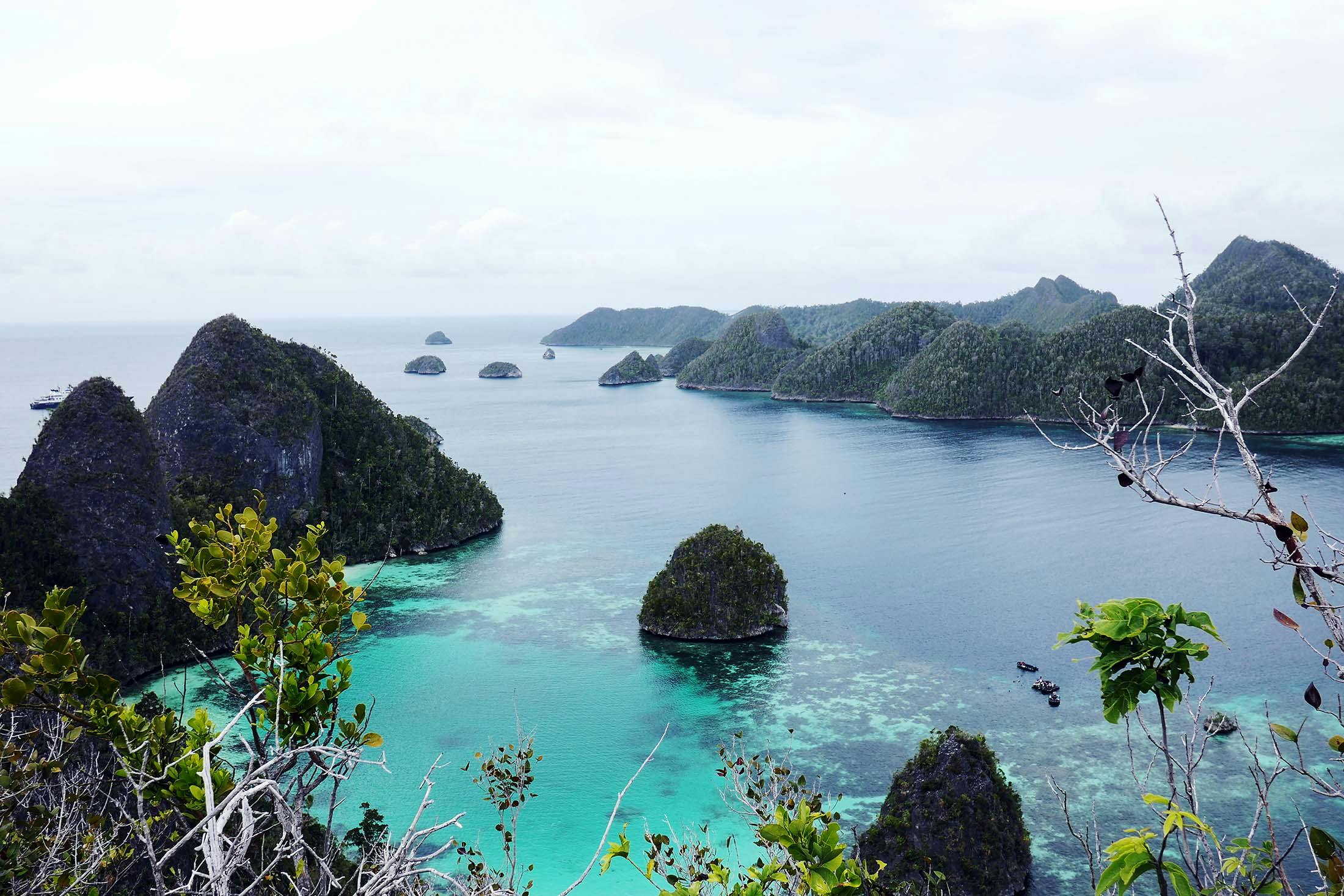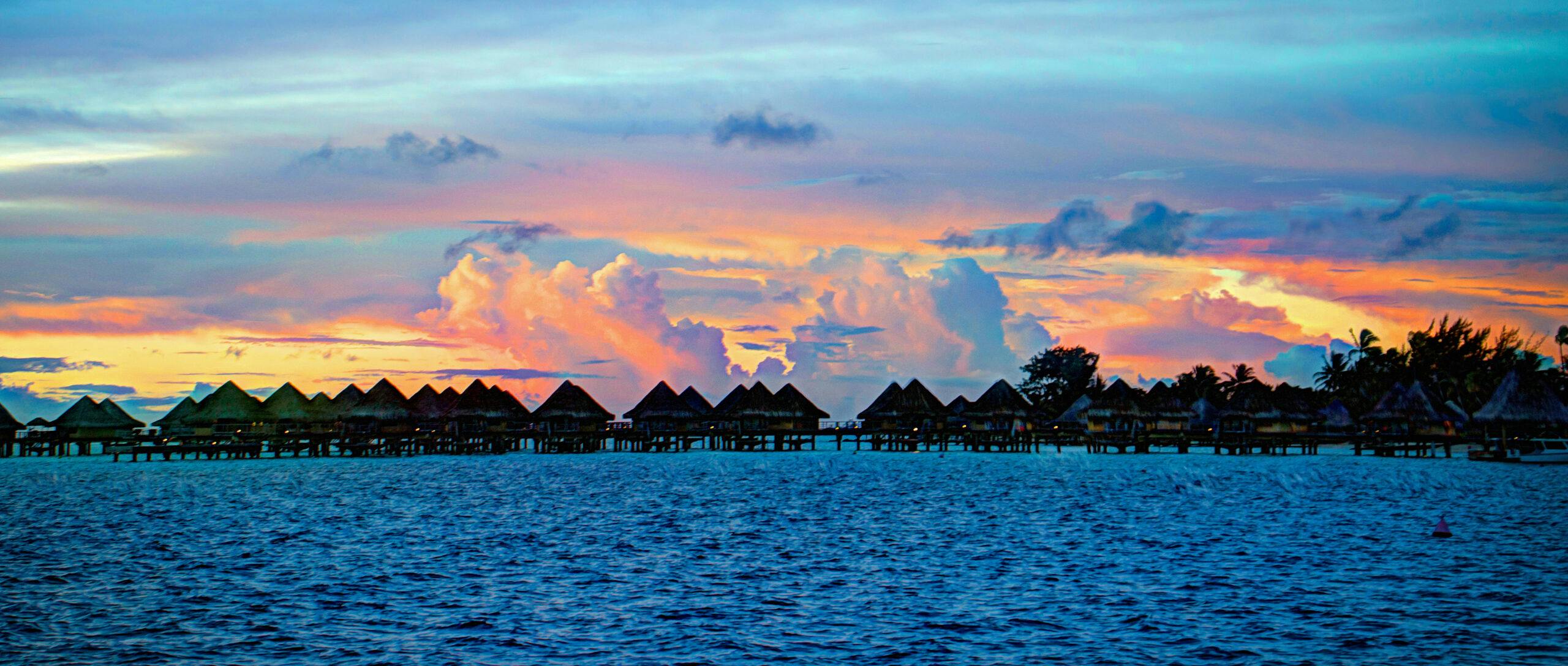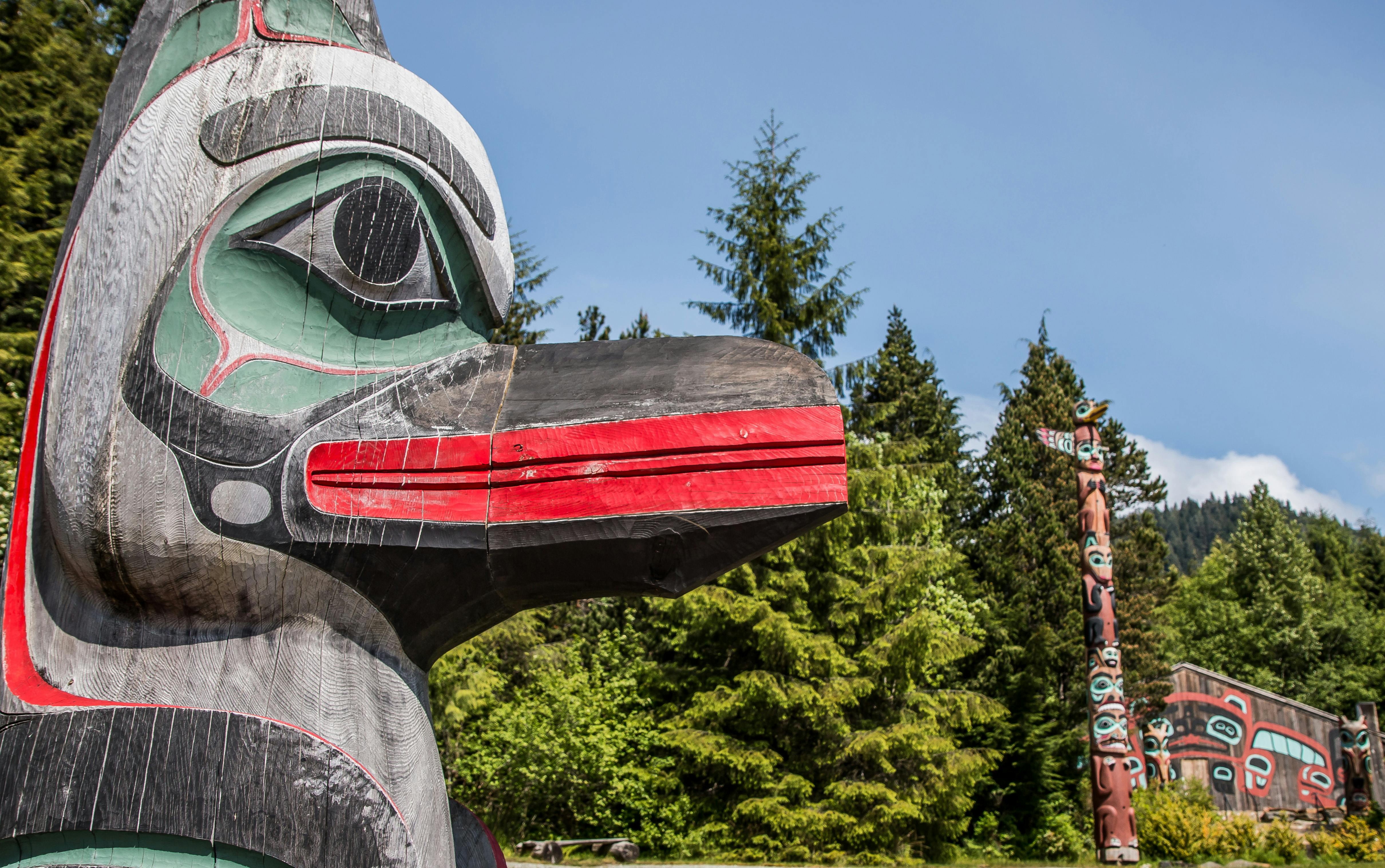Everything You Need to Know about French Polynesia
Two questions arise immediately when you think of French Polynesia: How do I get to see its marvelous islands and atolls and where, exactly, is it?
The first is easy. Silversea is introducing in-depth itineraries for French Polynesia, an overseas collectivity of France that’s overseen by the French government. This sprawling paradise has little in common with the European nation other than its official language, which is French (which accompanies Tahitian).
French Polynesia is more a region than any one specific place. Each set of its islands has its own culture and traditions. The constants, however, are the lush islands, the crystalline waters and the hypnotizing blue in its oceans. Here’s what to know.
Where in the world is French Polynesia?
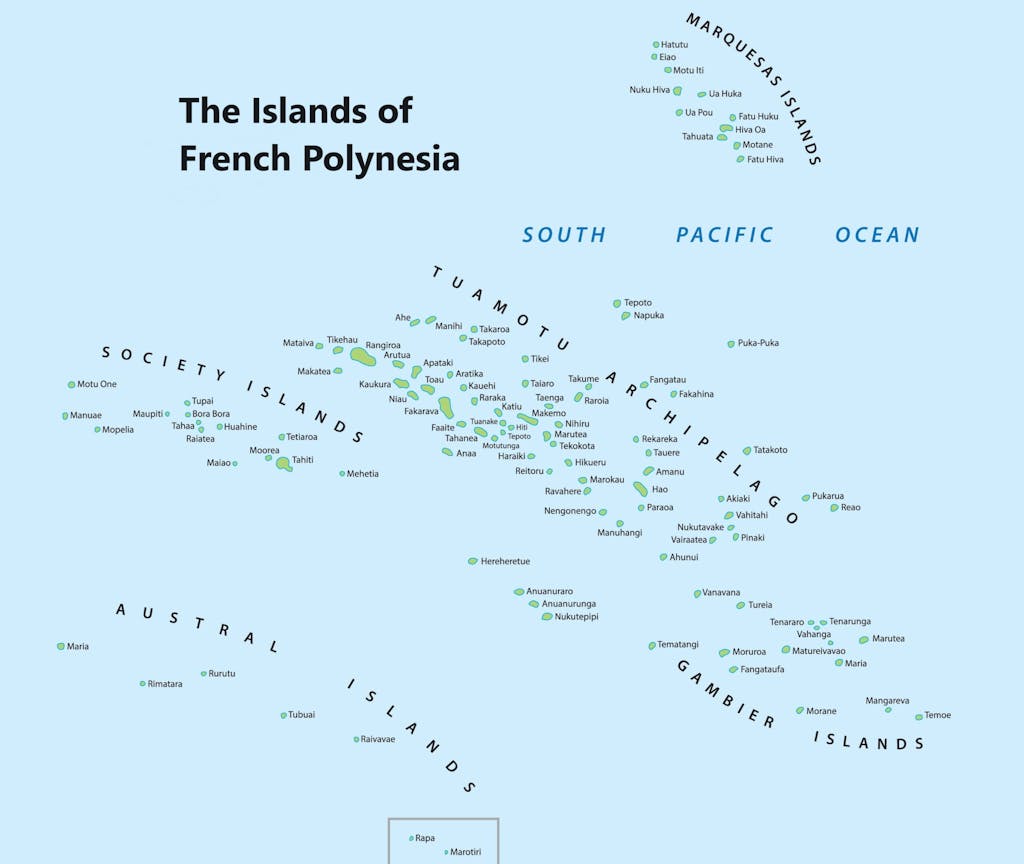
About 2,652 miles off New Zealand lie five archipelagos in the south-central Pacific Ocean — this is French Polynesia. At the center of the Polynesian triangle (made up of New Zealand, Hawaii and Easter Island) are those archipelagos: the Society Islands, Tuamotu Archipelago, the Marquesas Islands, the Gambier Islands and the Austral, or Tubuai, Islands.
Consisting of more than 100 individual islands, French Polynesia has a total land area equivalent Paris and London combined. This collection of islands and atolls is spread across an area of the South Pacific Ocean that is five times the size of France (about 1.5 million square miles).
Many cruises and land itineraries depart from Papeete, the capital of French Polynesia and on. island of Tahiti, the best-known city and island in a region of five archipelagos.
Which islands and ports constitute French Polynesia?
The Society Islands and the Marquesas are among the most popular destinations in French Polynesia. On a cruise, passengers might visit more than half a dozen islands spread across three of these distinct archipelagos.
Here are some of the places you’ll likely see.
Society Islands
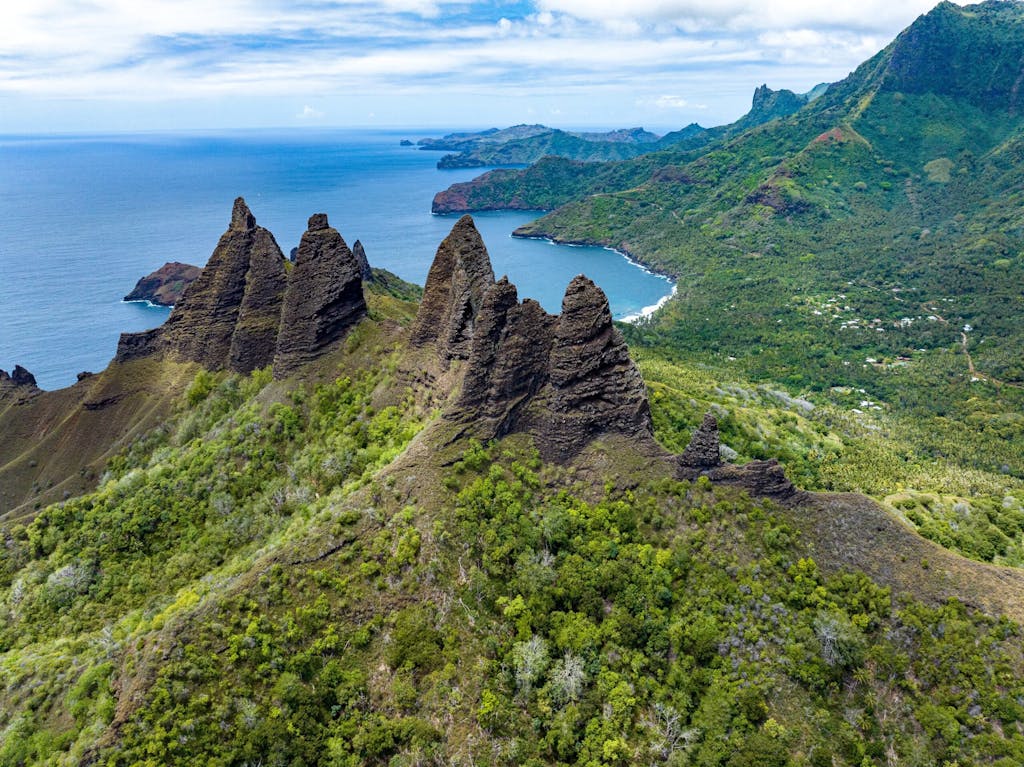
When most people think of French Polynesia, they are thinking of the Society Islands. Dramatic volcanic structures and fringes of coral reefs create jaw-dropping landscapes. Most of the region’s urban centers provide visitors with infrastructure for satisfying shopping and dining opportunities. Some of its must-see places:
Tahiti is French Polynesia’s largest and most populous island and so synonymous with the region that many refer to French Polynesia simply as “Tahiti.” Black sand beaches, waterfalls and two extinct volcanoes accompany the island’s tropical city center. From botanical gardens and French cafes to inventive food trucks and a street art museum, Papeete has a bit of everything for visitors — before or after their vacation.
Bora Bora: Bora Bora is the top honeymoon destination in French Polynesia and gives the world some of the most memorable images of the area’s lagoons and overwater bungalows. From Mount Otemanu to the memorable port of Vaitape, Bora Bora is a must-see island. At just six miles long and two miles wide, it’s has been with such superlatives, including Pearl of the Pacific.
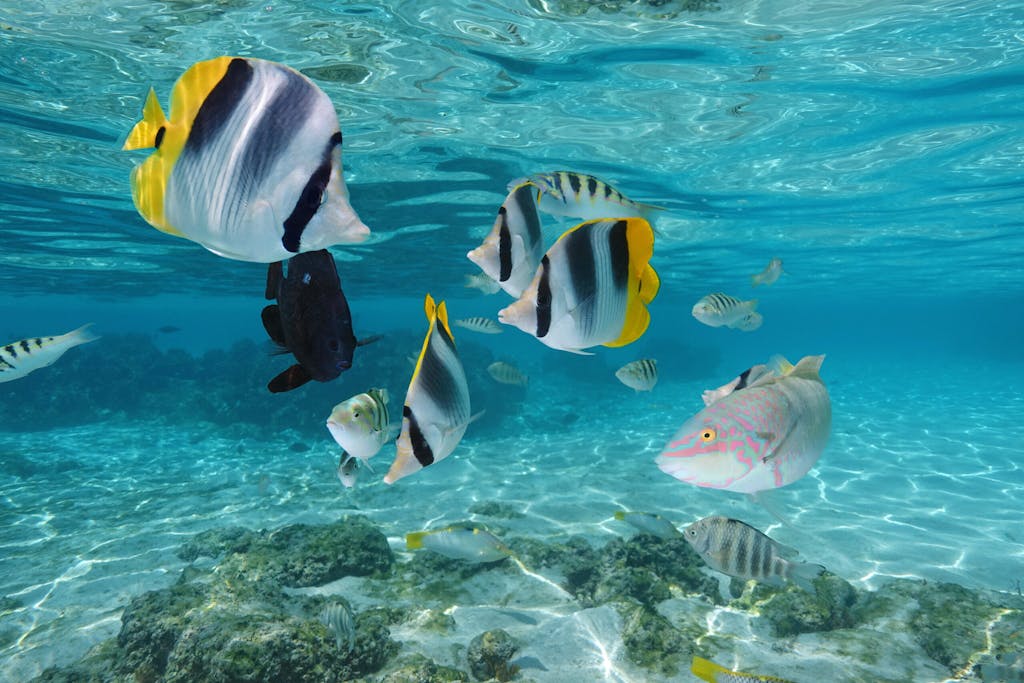
Moorea: Just 10 nautical miles from Tahiti lies friendly Moorea, with its eight stunning peaks and translucent lagoon. Resembling the shape of a heart, this island exudes romance from its geographical shape to its many resorts catering to honeymooners and couples of all ages. Still, Moorea has retained a slightly less touristy appeal than the surrounding islands.
Huahine: Huahine Nui (big) and Huahine Iti (small) are close to neighboring Society Islands Bora Bora and Raiatea. Less visited than Tahiti or Moorea, Huahine has retained much of its natural authenticity. The Eden-like island is green with tropical jungles featuring vanilla orchids, banana groves and watermelon fields.
Raiatea: The largest of the Society Islands after Tahiti, Raiatea is referred to as the birthplace of Polynesia. The island’s name translates to “faraway heaven,” and it is thought to be the final resting place for the spirits of indigenous ancestors. Visitors to Raiatea will enjoy a rich, cultural heritage alongside a large, protected lagoon well suited to sailing, fishing and diving.
Marquesas Islands
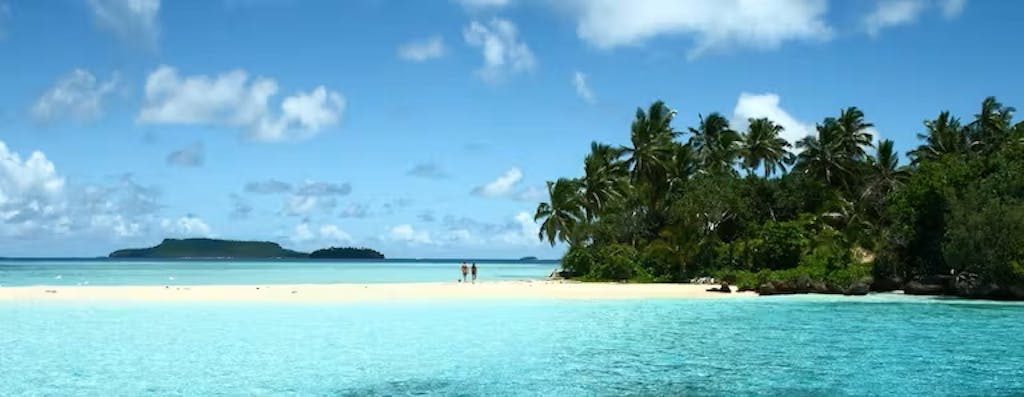
The Marquesas are considered one of the most remote archipelagos in the world, farther from a continental landmass than any other island chain. With their own time zone and their own traditions, the Marquesas Islands are a definite departure from a stay in the Society Islands.
Nuku Hiva: The largest of the Marquesas Islands and the second-largest island in French Polynesia. Nuku Hiva offers its own utopia of staggering cliffs and verdant valleys. Among the giant banyan trees, visitors can discover ancient temples, ceremonial grounds and stone tiki statues. The center of town features its own Notre Dame Cathedral.
Hiva Oa: Known as the “Garden of the Marquesas,” Hiva Oa is also the final resting place of artist and painter Paul Gauguin and Belgian singer Jacques Brel. The remains of ancient civilizations are scattered here, making it a fascinating place for archaeologists and visitors alike.
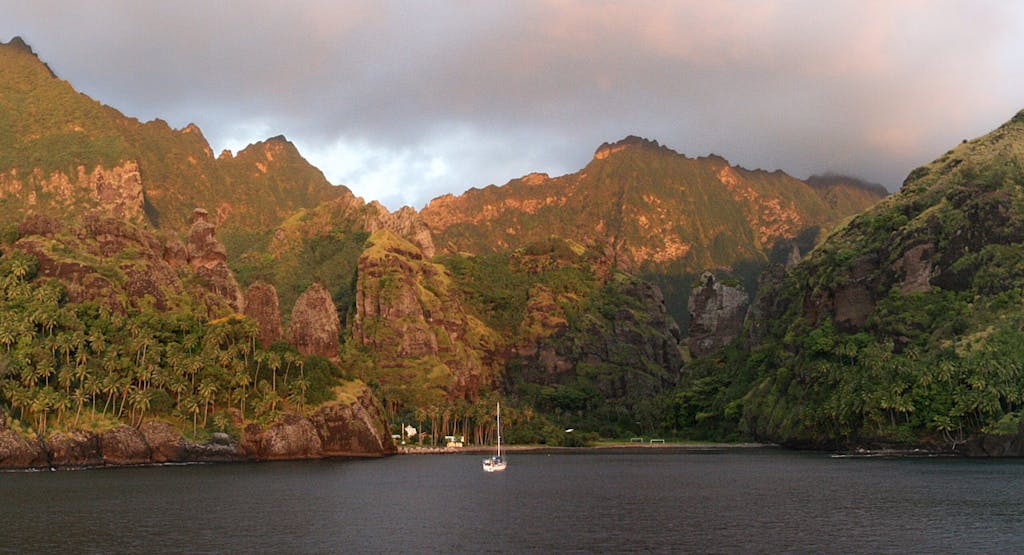
Fatu Hiva: With a population of just 1,200, remote Fatu Hiva is accessible only by sea. Hikers will be surrounded by lush scenery, and visitors who linger in the village of Omoa can witness the island’s famed practices of making pareo — hand painted wraparound skirts — or artisans tapping out intricate designs in tree bark.
Tahuata: Tahuata means “sunrise” in the local Marquesan language. Apart from its natural beauty, the island has twin bays, archaeological sites, a craft market (many residents make a living as sculptors here) and the village center of Hapatoni.
Tuamotu Archipelago
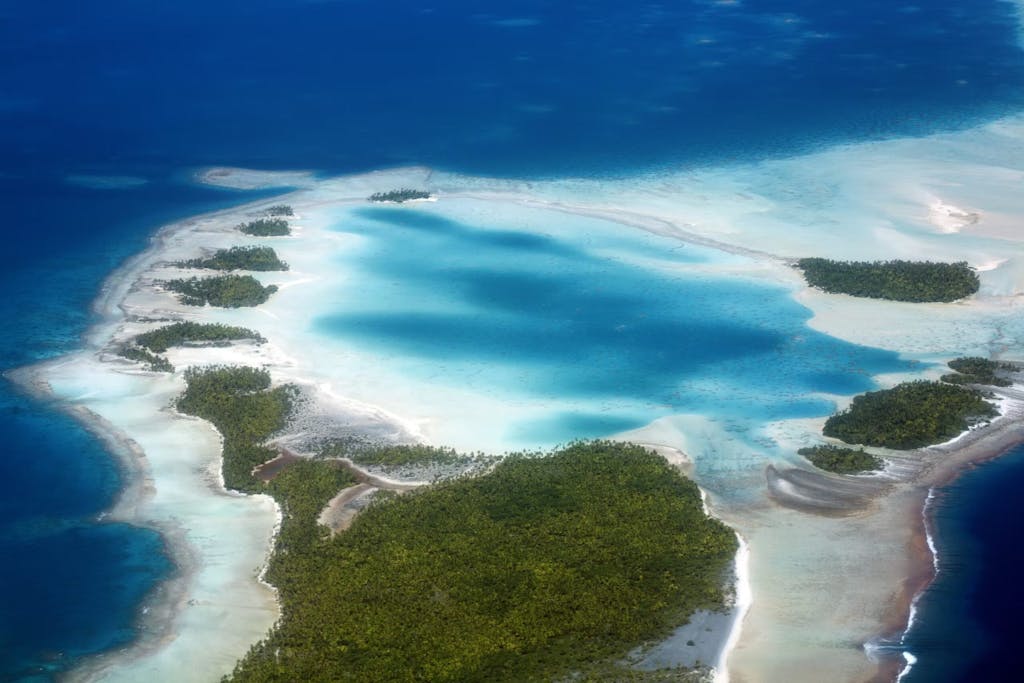
Known for its many atolls – or low-lying islands — Tuamotu is a hidden haven with dazzling blues as far as the eye can see. Its atolls stretch across a space about the size of Western Europe.
Rangiroa: One of the region’s most gorgeous atolls, Rangiroa provides an underwater aquarium of sea life, including wild dolphins, for anyone willing to dip into seas. Rangiroa, meaning “vast sky,” is a wide-open space, with its own “Blue Lagoon” and plenty of warm, shallow waters for relaxation.
Fakarava: This UNESCO Biosphere Reserve is the second-largest lagoon in the Tuamotu Atolls and home to a variety of rare and endemic species of birds, plants and crustaceans. Besides being a top destination for divers, Fakarava is heavily involved in sustainability; many of its residents are pearl and copra (coconut) farmers and rely on their own stewardship to protect the local resources.
What is French Polynesia known for?
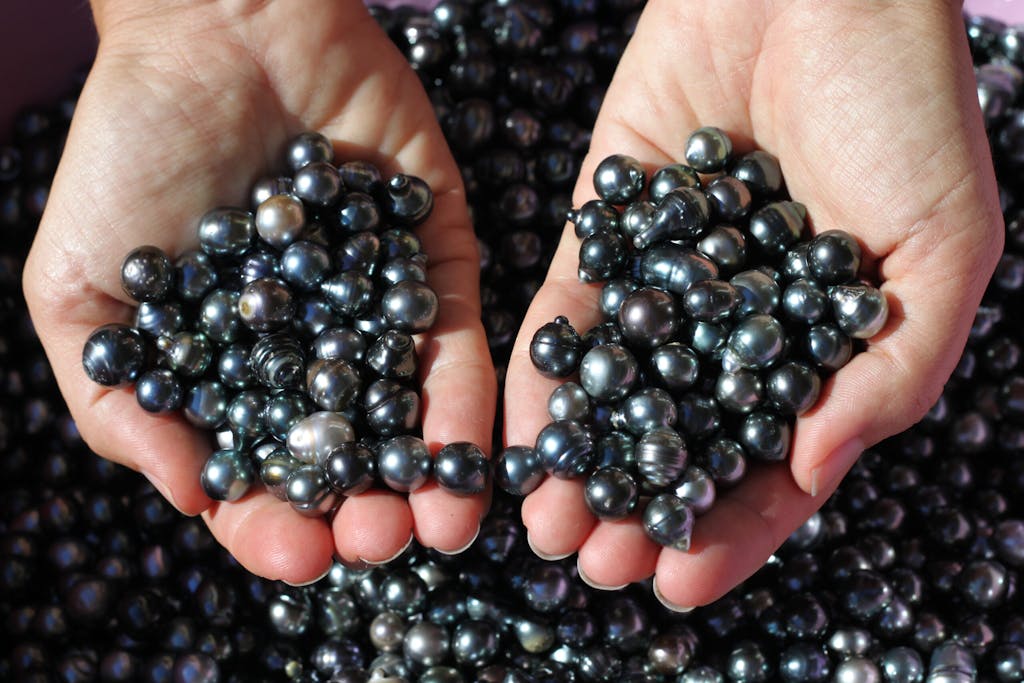
Snorkelers and divers will find aquatic heaven in the clear waters here, which reveal 800 species of fish, coral, marine life — and sea turtles — teeming throughout lagoons and the surrounding seas. There’s little diversity in French Polynesia’s overall flora and fauna. This is because of the islands’ isolation; there are no indigenous mammals, although feral goats, pigs, cattle horses and rats have been introduced. In terms of plant life, fruit trees as well as coconut and breadfruit flourish on coastal plains.
If you’re seeking the ideal souvenir, Tahitian cultured pearls are a unique, sought-after luxury. Often referred to as “black pearls,” these gems can range from dark green and purple to pink or blue. Tahitian vanilla, wood carvings, coconut oil, printed cloth and sandals are other popular items that often accompany visitors home from French Polynesia.
On the cultural front, many are familiar with the images of French artist Paul Gauguin, who lived for a time on Tahiti and Hiva Oa. Gauguin captured post-Impressionistic images of the islands in the late 19th and early 20th centuries, and some of his work can be seen at the Paul Gauguin Museum in Tahiti.

Daily life in French Polynesia
People throughout this region are referred to as Polynesian, though residents are ethnically a mix of Tahitian (41 percent); mixed European-Polynesian (17 percent); and Tuamotuan (8.5 percent); with the rest evenly divided between French, Han Chinese and other at around 11 percent each.
French Polynesia’s population skews young; 65 percent of its residents are younger than 45. Most of the population is urban (62 percent), and the remaining 38 percent is considered rural, dwelling in scattered villages rather than city centers.
Most Polynesians (33 percent) are Presbyterian members of the Maohi Protestant Church (formerly the Evangelical Church of French Polynesia). A close second for the religious majority (31 percent) is Roman Catholicism. The third-leading religious identifier of French Polynesia at 22 percent is “Chinese, folk-religionist, nonreligious and other.” Rounding out the religious population is “other Christianity” at 8 percent and Mormon at 6 percent.

Tourism is the primary economic activity of French Polynesia. Rich endemic resources, such as fish, plants and produce, account for little of the gross domestic product and are instead used by locals to subsist. Even the export of Tahiti’s famed vanilla, which has a delicate flavor that many bakers cherish, has declined in recent years, although shrimp and oyster farming has increased. Pigs, chickens and cattle are raised to feed the people of the islands.
Black cultured pearls account for two-thirds of export earnings. French Polynesia’s primary trade partners consist of France, Hong Kong, China, New Zealand, the Netherlands, Japan, South Korea and the United States.
Hydroelectric power plants sprouted up in the 1980s on Tahiti, and hydroelectricity now accounts for at least a third of the country’s power. Although aren’t many roads, most of French Polynesia’s road network is paved or stone surfaced.
Healthcare facilities throughout the islands are concentrated in towns and cities, and other hospitals are spread throughout Moorea, Ta’aone, Uturoa and beyond.
Schooling is compulsory for children ages 6 to 14 and free for students attending government day schools. Primary education is government funded; secondary education is funded through church groups as well as the government. The University of French Polynesia, founded in 1987, is the only facility for higher education on the islands. It is in Papeete and has a second campus in New Caledonia.
How do these island nations differ?
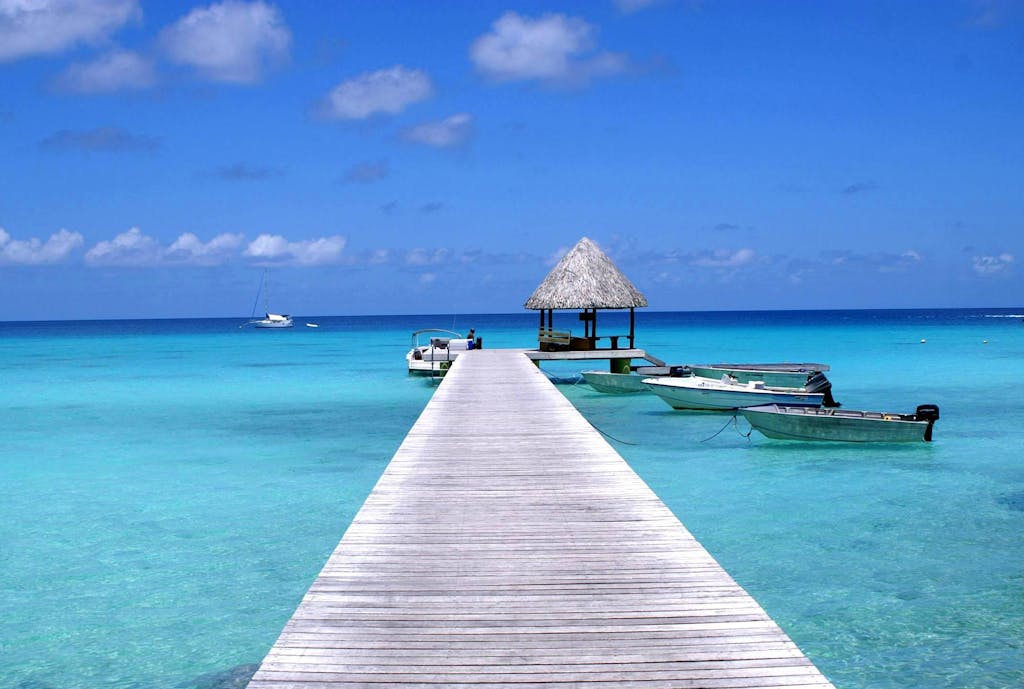
With 40 percent of French Polynesia’s land mass and 90 percent of its population, the Society Islands are the best-known islands in the region. There are the Iles du Vent (Windward Islands) and Iles Sous la Vent (Leeward Islands). Unsurprisingly, the seat of local government sits in Papeete.
To the east of the Society Islands is the 266-square-mile Tuamotu Archipelago, made up of about 80 islands and low-lying coral atolls. At the southern extremity of Tuamotu are the Gambier Islands, which are made up of four high volcanic islands and a few islets spanning 14 square miles. The main island of Gambier is Mangareva.
To the northeast of Tahiti by about 900 miles are the 14 islands of the Marquesas. Although these are also volcanic islands, they lack a coastal plain, like that of the Society Islands, thanks to the absence of a barrier reef. This makes the Marquesas challenging to access from the sea, so most people live in the valleys where they engage in agricultural pursuits.
In southernmost French Polynesia are the Tubuai, or Austral, Islands. These remote, low-lying islands cover about 57 square miles. Only a few of the islands are inhabited, and because of their isolation and difficult conditions, many people here migrate to the Marquesas or Tahiti.
Why visit French Polynesia?
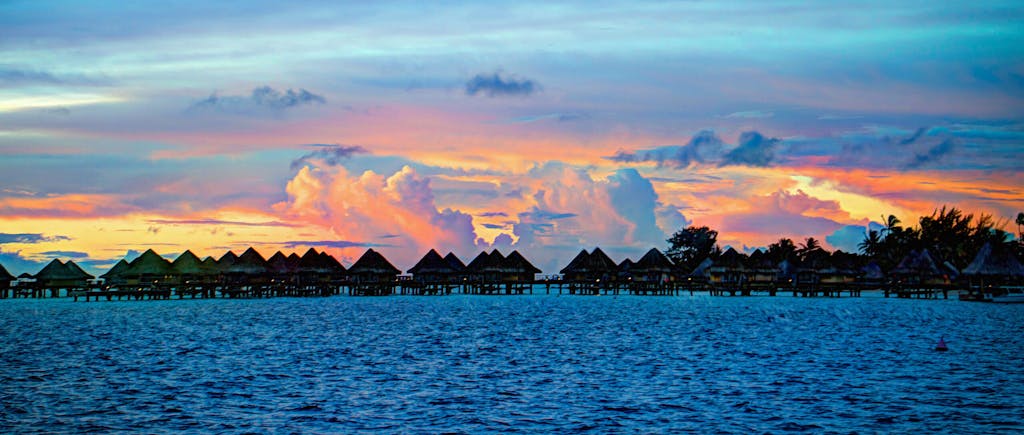
It often takes only a glimpse of Bora Bora’s ubiquitous bungalows over turquoise waters to consider adding French Polynesia to your must-see list. But if you need a little more convincing, consider powdery beaches and sumptuous valleys that feel as though they are perched at the ends of the Earth. Then pair it with some local cuisine. The seafood couldn’t be fresher and so consider the national dish poisson cru, raw fish marinated in coconut milk and lime.
French Polynesia is more than just a pretty postcard. It offers thousands of years of native song, dance and tradition. Archaeological evidence suggests that the Marquesas might have been settled around 200 BCE. Polynesians migrated to modern-day Hawaii in about 300 CE. European contact with French Polynesia didn’t begin until the mid-16th century with Portuguese navigator Ferdinand Magellan, but it continued for the next three centuries.
After witnessing a painterly sunset, visitors might be surprised to find some of the darkest skies they’ve ever encountered. This is an ideal backdrop for superior stargazing.
Packing, money and other tips for French Polynesia
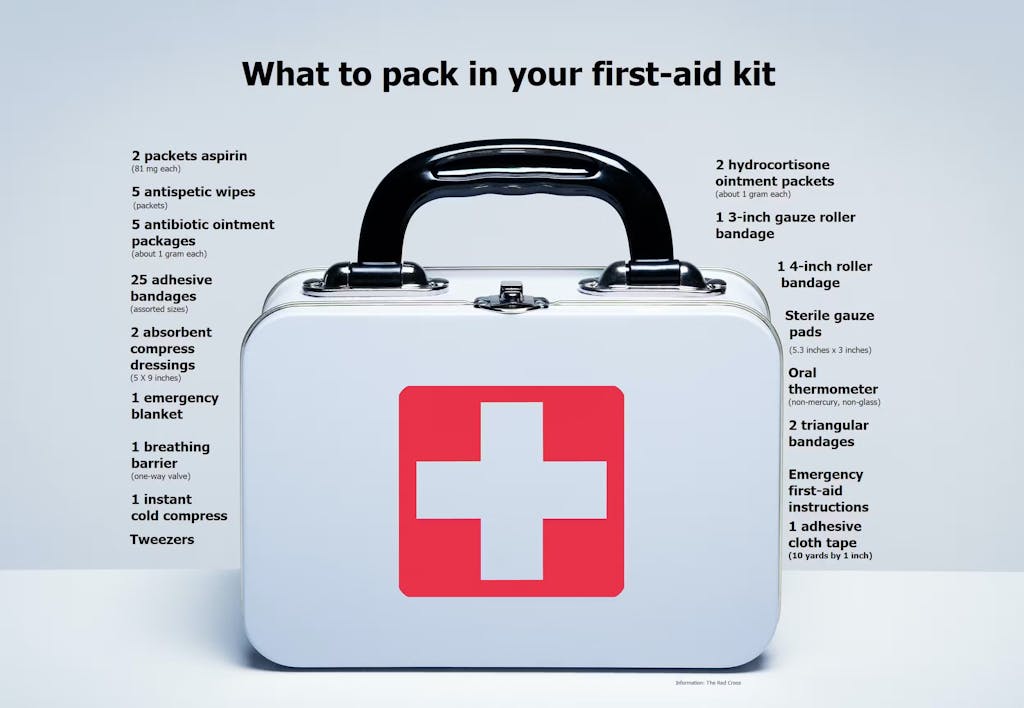
With a warm and humid tropical climate, French Polynesia means light, breathable layers and some waterproof gear. See more packing tips here.
The rainy season is November to April; the cooler and drier season runs May through October.
Expect wind and rain — albeit warm — throughout your visit; precipitation is abundant, as are trade winds. However, the temperature does not vary greatly, meaning you can expect temps in the 70s and 80s with high humidity year-round.
Having enough prescription medication is a must. While your ship might sell some basic supplies, there aren’t any big box stores on the islands. Also consider bringing your own snorkel mask if you have a preference.
Currency throughout most of France’s overseas collectivities is the French-Pacific franc, also referred to as the CFP franc (XFP). One U.S. dollar is the equivalent of about 110 CFPs. Vendors in cities such as Papeete will accept credit cards, but expect to have to convert some currency while traveling the islands. Otherwise, you will miss out on purchasing opportunities in villages.



